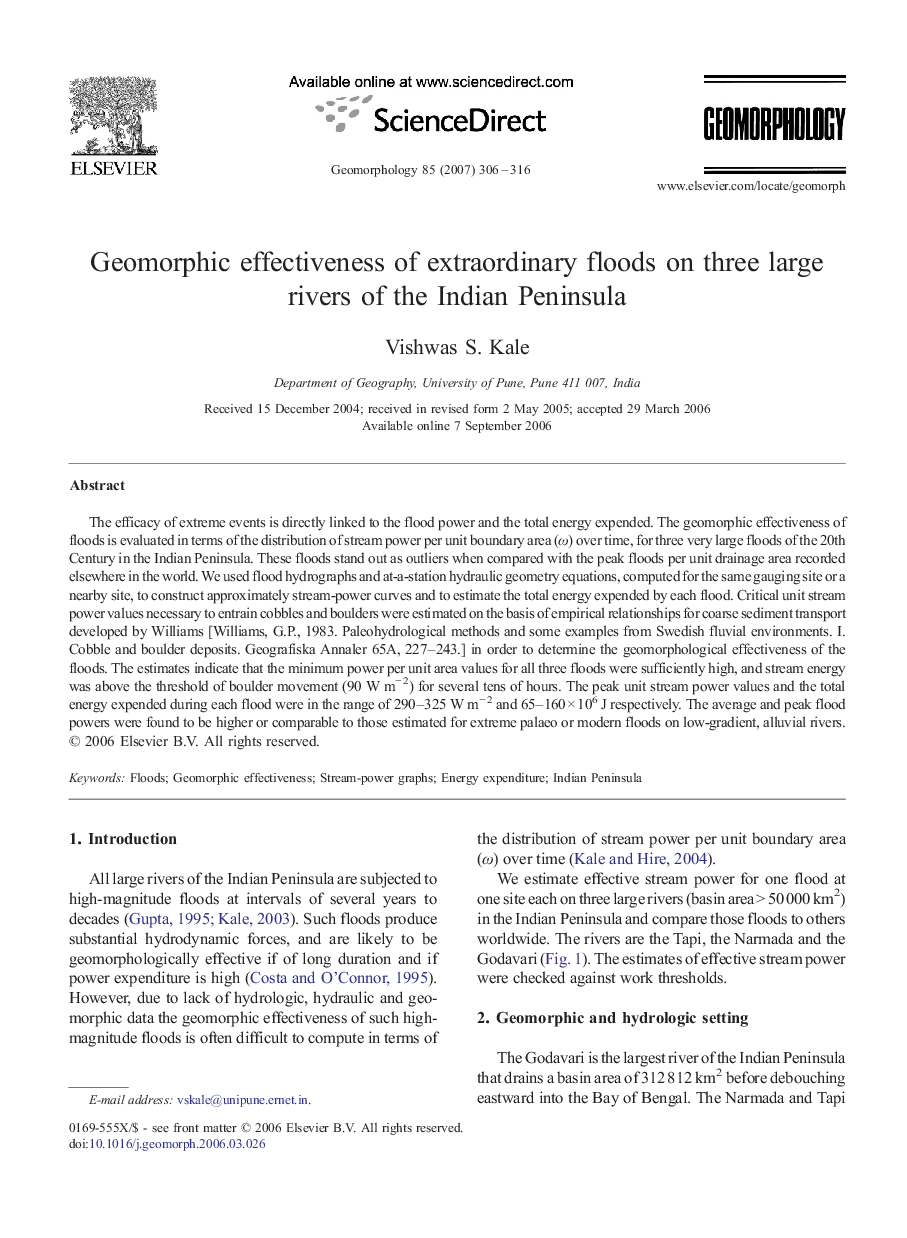| Article ID | Journal | Published Year | Pages | File Type |
|---|---|---|---|---|
| 4687355 | Geomorphology | 2007 | 11 Pages |
The efficacy of extreme events is directly linked to the flood power and the total energy expended. The geomorphic effectiveness of floods is evaluated in terms of the distribution of stream power per unit boundary area (ω) over time, for three very large floods of the 20th Century in the Indian Peninsula. These floods stand out as outliers when compared with the peak floods per unit drainage area recorded elsewhere in the world. We used flood hydrographs and at-a-station hydraulic geometry equations, computed for the same gauging site or a nearby site, to construct approximately stream-power curves and to estimate the total energy expended by each flood. Critical unit stream power values necessary to entrain cobbles and boulders were estimated on the basis of empirical relationships for coarse sediment transport developed by Williams [Williams, G.P., 1983. Paleohydrological methods and some examples from Swedish fluvial environments. I. Cobble and boulder deposits. Geografiska Annaler 65A, 227–243.] in order to determine the geomorphological effectiveness of the floods. The estimates indicate that the minimum power per unit area values for all three floods were sufficiently high, and stream energy was above the threshold of boulder movement (90 W m− 2) for several tens of hours. The peak unit stream power values and the total energy expended during each flood were in the range of 290–325 W m− 2 and 65–160 × 106 J respectively. The average and peak flood powers were found to be higher or comparable to those estimated for extreme palaeo or modern floods on low-gradient, alluvial rivers.
